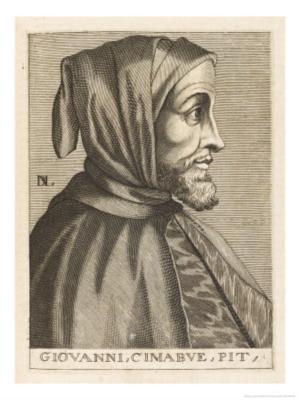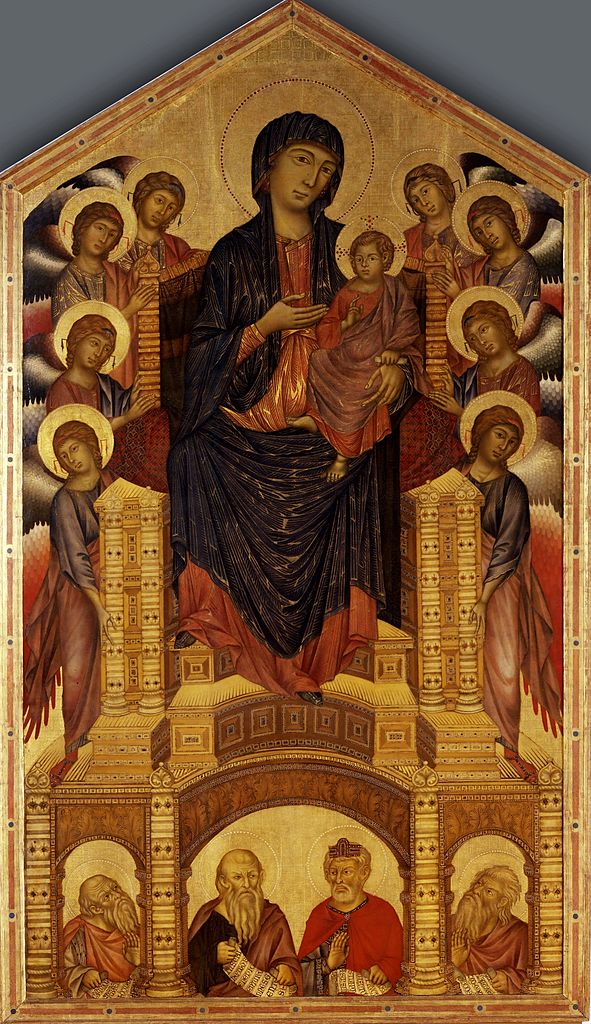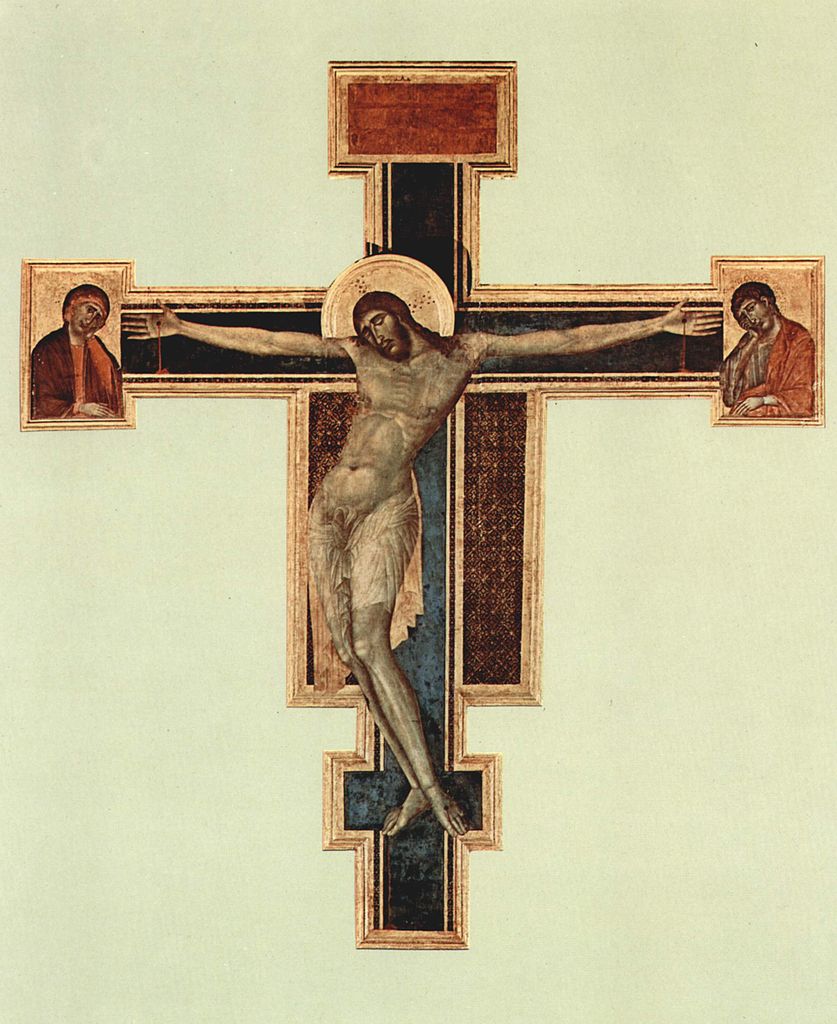| Cimabue | |
|---|---|
 |
|
| Born | Bencivieni di Pepo (Benvenuto di Giuseppe) 1240 |
| Died | 1302 |
| Nationality | Italian |
| Movement | Naturalism |
| Field | Painting |
| Works | View Complete Works |
Cimabue (1240-1302) was a master Florentine painter and mosaicist, who was a pioneer in the artistic movement towards naturalism in his time. Cimabue introduced three-dimensional designs using the Romanesque approach, with Byzantine models and medieval techniques to create his own style.
Cimabue built on existing styles of painting to create more life-like and proportional figures, making subjects more realistic to the viewer. Cimabue may not have received credit for many of the changes in art style at this time, but he was a great contributer and major force of naturalism in art and the realist movement.
His Life
 There is very little documentation about Cimabue’s early life and training in art. It is thought that Cimabue was born in Florence and died in Pisa, Italy. There are a number of works attributed to Cimabue, however, only one was dated with certainty and that is the mosaic of St. John the Evangelist, created in 1301-1302 in the Pisa Duoma. His first attributed work, the Crucifixion, in the church of San Dominico in Arezzo, was thought to have been created in 1270. In 1280, it is said that he painted the Maesta, now displayed at the Louvre Museum.
There is very little documentation about Cimabue’s early life and training in art. It is thought that Cimabue was born in Florence and died in Pisa, Italy. There are a number of works attributed to Cimabue, however, only one was dated with certainty and that is the mosaic of St. John the Evangelist, created in 1301-1302 in the Pisa Duoma. His first attributed work, the Crucifixion, in the church of San Dominico in Arezzo, was thought to have been created in 1270. In 1280, it is said that he painted the Maesta, now displayed at the Louvre Museum.
Cimabue is said to have been a nickname, meaning bull headed. His real name is thought to have been Cenni di Pepi, but he was also known as Bencivieni di Pepo, or Benvenuto di Giuseppe. Because his works were not dated or signed, and many were destroyed by time or natural disaster, and Cimabue may not have received the credit which he so deserved. Many of his artworks are still disputed today because of the lack of documentation.
Artistic Style
 Cimabue was strongly influenced by the Greek Byzantine style, but he introduced his own more natural style of these traditional subjects. He was one of the first artists of his time to leave the traditional, somewhat stiff Byzantine style of art, opting to find more beauty in the reality of nature and life. He used soft and natural outlines, with finer portrayal of muscles and bones. These three-dimensional designs exhibited his dramatic and sentimental approach to art.
Cimabue was strongly influenced by the Greek Byzantine style, but he introduced his own more natural style of these traditional subjects. He was one of the first artists of his time to leave the traditional, somewhat stiff Byzantine style of art, opting to find more beauty in the reality of nature and life. He used soft and natural outlines, with finer portrayal of muscles and bones. These three-dimensional designs exhibited his dramatic and sentimental approach to art.
Cimabue worked with egg tempera on panel to create his frescoes or religious murals, and paintings. His subjects were of the crucifixion, saints and apostles, and scenes from the Apocalypse. He used linear perspective, which was later more refined by his pupil Giotto. It is thought that although the Florentine school was attributed to Giotto, it was Cimabue’s style which inspired this movement. Members of the later formed Florentine School, were masters such as Michael Angelo, Raphael, and Leonardo da Vinci.
Contribution to Art
 Although Cimabue is a somewhat forgotten inspiration, he set a new direction for art of his time period. Life-like figures, with realistic traits and proportions, were a radical departure from the European artistic tradition of the time. Remaining true to the theme of religious icons, Cimabue introduced realism to his art, anticipating the naturalist movement to come.
Although Cimabue is a somewhat forgotten inspiration, he set a new direction for art of his time period. Life-like figures, with realistic traits and proportions, were a radical departure from the European artistic tradition of the time. Remaining true to the theme of religious icons, Cimabue introduced realism to his art, anticipating the naturalist movement to come.
Cimabue’s Madonna, in the Church of Santa Maria, has been regarded as a marvel of art. Cimabue’s last work, the Large Mosaic of St. John in Pisa Cathedral, was started in 1302, but he died that same year, leaving the altarpiece to be completed by his student Giotto. Cimabue’s realistic style was respected and admired by other artists such as Giotto and Duccio, but was also was a catalyst for the realism movement.